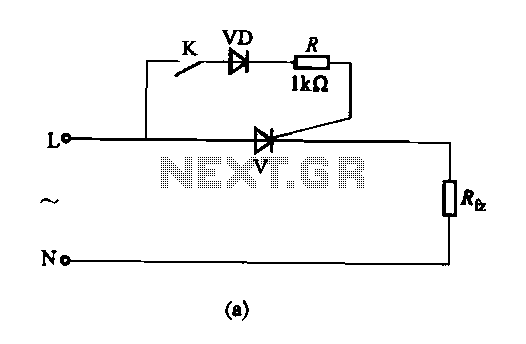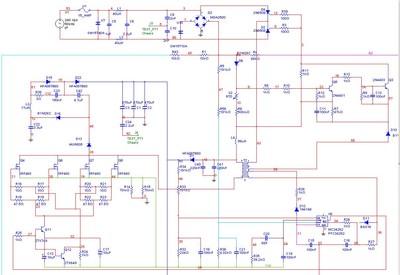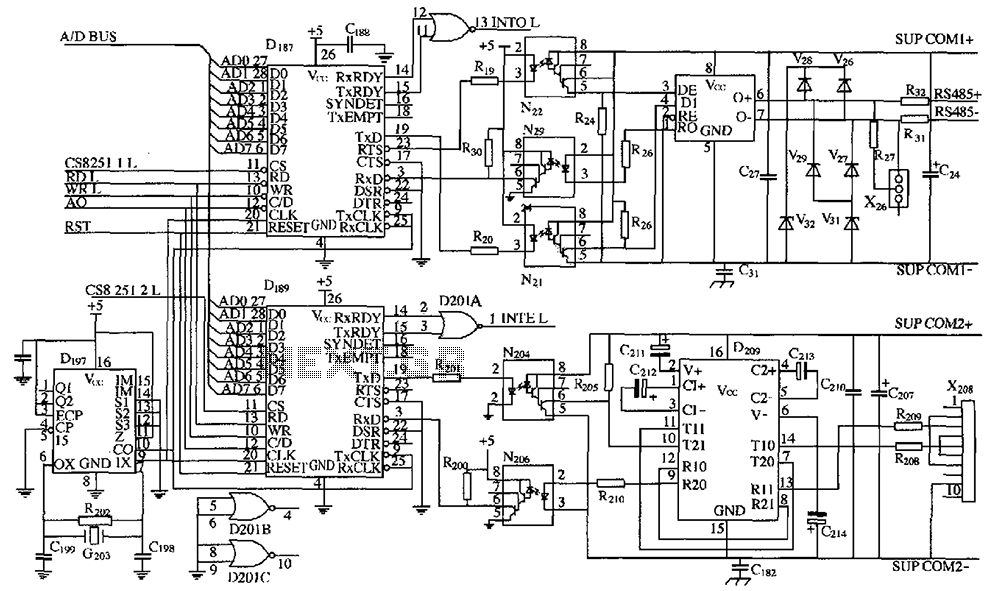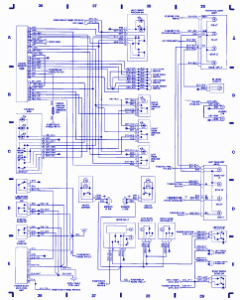
Ultrasonic transmitter circuit
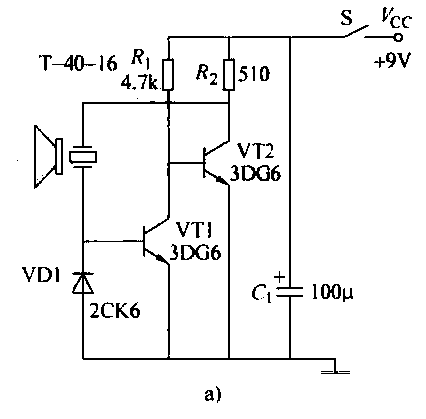
The ultrasonic transmitter circuit T-40-16, along with various discrete components, functions as a feedback sensor. The transistors VT1 and VT2 create a robust positive feedback oscillator that converts an electric signal into an ultrasonic oscillation signal, with the oscillation frequency matching the center frequency of the T-40-16 ultrasonic transmitter at 40 kHz. The circuit operates similarly to the T-40-16, generating a square wave pulse voltage with an amplitude close to the power voltage. When the switch S is pressed, it emits a series of 40 kHz ultrasonic signals to a receiver. The circuit operates at a voltage of -9V and a current of 25mA, with a remote control range of approximately 8 meters. An alternative ultrasonic transmitter circuit, MA40EIS, also operates in the same manner as depicted in Figure 18-60a, but utilizes the MA40EIS sensor. This sensor shares similar structural and operational properties with the T-40-16. Additionally, the collector inductor L of VT2 acts as a load resistance to enhance the excitation voltage, allowing the transmitter to deliver greater power and improve its resonance characteristics.
The ultrasonic transmitter circuit T-40-16 is designed to generate high-frequency ultrasonic waves for various applications such as remote sensing, object detection, or communication systems. The circuit architecture includes two key transistors, VT1 and VT2, which are configured to form a positive feedback oscillator. This configuration is crucial for ensuring that the oscillation frequency remains stable at 40 kHz, which is the operational frequency of the T-40-16 transmitter.
The circuit operates with a supply voltage of -9V, which is typical for low-power ultrasonic applications. The current consumption of 25mA indicates that the circuit is energy-efficient, making it suitable for battery-operated devices. The operational range of approximately 8 meters allows for effective transmission and reception of ultrasonic signals, making it ideal for applications where compactness and efficiency are essential.
When the switch S is activated, the circuit initiates the oscillation process, producing a series of ultrasonic pulses. These pulses can be received by compatible ultrasonic receivers, enabling communication or detection capabilities. The square wave output generated by the circuit is characterized by its voltage amplitude, which closely matches the power supply voltage, ensuring effective signal transmission.
The alternative circuit using the MA40EIS sensor operates similarly to the T-40-16, demonstrating the versatility of the design. The inductor L, connected to the collector of VT2, serves a dual purpose: it acts as a load resistance and enhances the excitation voltage. This design feature allows for increased power transmission, which is beneficial for applications requiring longer-range ultrasonic communication or enhanced sensitivity in detecting reflected signals.
Overall, the T-40-16 ultrasonic transmitter circuit represents a well-engineered solution for generating ultrasonic waves, with its robust feedback mechanism and efficient power handling capabilities contributing to its effectiveness in various electronic applications.Given by the ultrasonic transmitter circuit T-40-16 and other discrete components. T-40-16 as a feedback sensor element and the electrical circuit of the transistors VTI, VT2 form a strong positive feedback oscillator frequency, the electric signal into an ultrasonic oscillation signal, the oscillation frequency is equal to the center frequency of the ultrasonic transmitter of the T-40-16 40kHz. The circuit work oak, T-40-16 is similar oscillation waveform generated across the square wave pulse voltage amplitude close to the power voltage faction.
When you press the switch S, can emit a series of 40kHz ultrasonic signal transmitter to the receiver of ,,. The circuit operating voltage geese -9V, operating current 25mA, remote control distance of up to about 8m.
As shown 18-60h given ultrasonic transmitter circuit MA4 0EIS / EIR and other discrete components. Works same as in Figure 18-60a, different sensor is MA40EIS. Its structure, properties and T-4 0-16 similar. In addition, the VT2 collector inductor L as the load resistance, in order to facilitate increased excitation voltage, so Nusheng wave transmitter capable of transmitting more power, but also to improve its resonance characteristics of the role
The ultrasonic transmitter circuit T-40-16 is designed to generate high-frequency ultrasonic waves for various applications such as remote sensing, object detection, or communication systems. The circuit architecture includes two key transistors, VT1 and VT2, which are configured to form a positive feedback oscillator. This configuration is crucial for ensuring that the oscillation frequency remains stable at 40 kHz, which is the operational frequency of the T-40-16 transmitter.
The circuit operates with a supply voltage of -9V, which is typical for low-power ultrasonic applications. The current consumption of 25mA indicates that the circuit is energy-efficient, making it suitable for battery-operated devices. The operational range of approximately 8 meters allows for effective transmission and reception of ultrasonic signals, making it ideal for applications where compactness and efficiency are essential.
When the switch S is activated, the circuit initiates the oscillation process, producing a series of ultrasonic pulses. These pulses can be received by compatible ultrasonic receivers, enabling communication or detection capabilities. The square wave output generated by the circuit is characterized by its voltage amplitude, which closely matches the power supply voltage, ensuring effective signal transmission.
The alternative circuit using the MA40EIS sensor operates similarly to the T-40-16, demonstrating the versatility of the design. The inductor L, connected to the collector of VT2, serves a dual purpose: it acts as a load resistance and enhances the excitation voltage. This design feature allows for increased power transmission, which is beneficial for applications requiring longer-range ultrasonic communication or enhanced sensitivity in detecting reflected signals.
Overall, the T-40-16 ultrasonic transmitter circuit represents a well-engineered solution for generating ultrasonic waves, with its robust feedback mechanism and efficient power handling capabilities contributing to its effectiveness in various electronic applications.Given by the ultrasonic transmitter circuit T-40-16 and other discrete components. T-40-16 as a feedback sensor element and the electrical circuit of the transistors VTI, VT2 form a strong positive feedback oscillator frequency, the electric signal into an ultrasonic oscillation signal, the oscillation frequency is equal to the center frequency of the ultrasonic transmitter of the T-40-16 40kHz. The circuit work oak, T-40-16 is similar oscillation waveform generated across the square wave pulse voltage amplitude close to the power voltage faction.
When you press the switch S, can emit a series of 40kHz ultrasonic signal transmitter to the receiver of ,,. The circuit operating voltage geese -9V, operating current 25mA, remote control distance of up to about 8m.
As shown 18-60h given ultrasonic transmitter circuit MA4 0EIS / EIR and other discrete components. Works same as in Figure 18-60a, different sensor is MA40EIS. Its structure, properties and T-4 0-16 similar. In addition, the VT2 collector inductor L as the load resistance, in order to facilitate increased excitation voltage, so Nusheng wave transmitter capable of transmitting more power, but also to improve its resonance characteristics of the role
